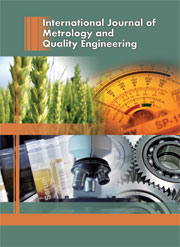No CrossRef data available.
Article contents
On hierarchical vs. non-hierarchical comparisons in metrology and testing
Published online by Cambridge University Press: 19 April 2010
Abstract
The type of data treatment is different depending on whether the comparison, in particular a key comparison of the MRA (mutual recognition agreement), is of the hierarchical or non-hierarchical type. This term does not mean a possible hierarchy among the participant laboratories; nor, in the opposite sense, a non-hierarchy among them like in the MRA key comparisons, but an intrinsic characteristic of the comparison measurand or design. It is a typical hierarchical comparison when the comparison involves artefact standards. In this case, the summary parameters of the comparison are hierarchically higher than the input dataset. In case of non-hierarchical comparisons, the summary parameters are generally not of a hierarchically higher level than the input dataset, because the comparison dataset can be considered drawn from a single super-population. This happens, when a single standard is circulated for measurement; when the measured samples are all drawn from a single batch of a reference material; when the standards are all realisations of a single condition – namely a physical or chemical state. This paper will discuss in detail these two categories.
- Type
- Research Article
- Information
- Copyright
- © EDP Sciences 2010




